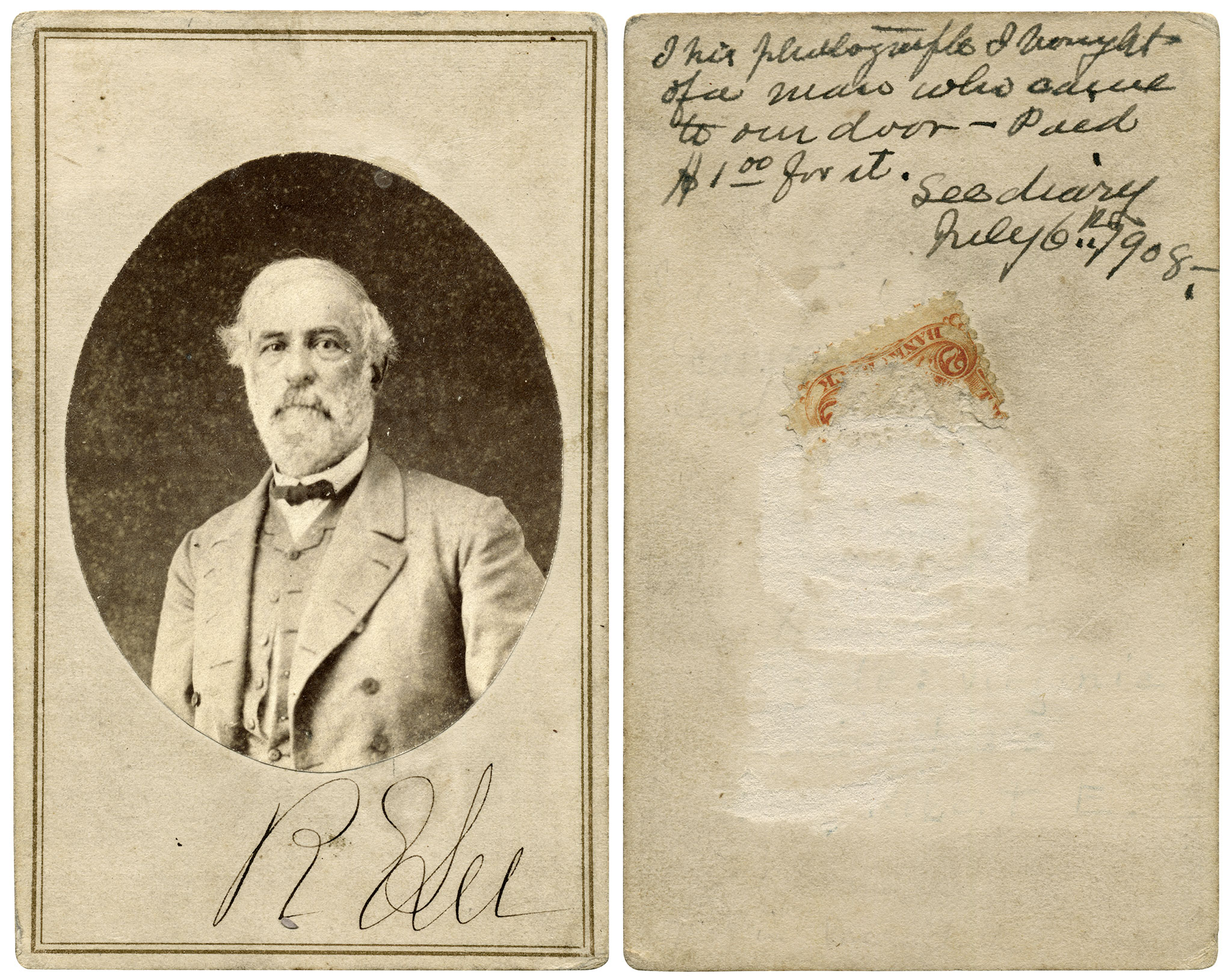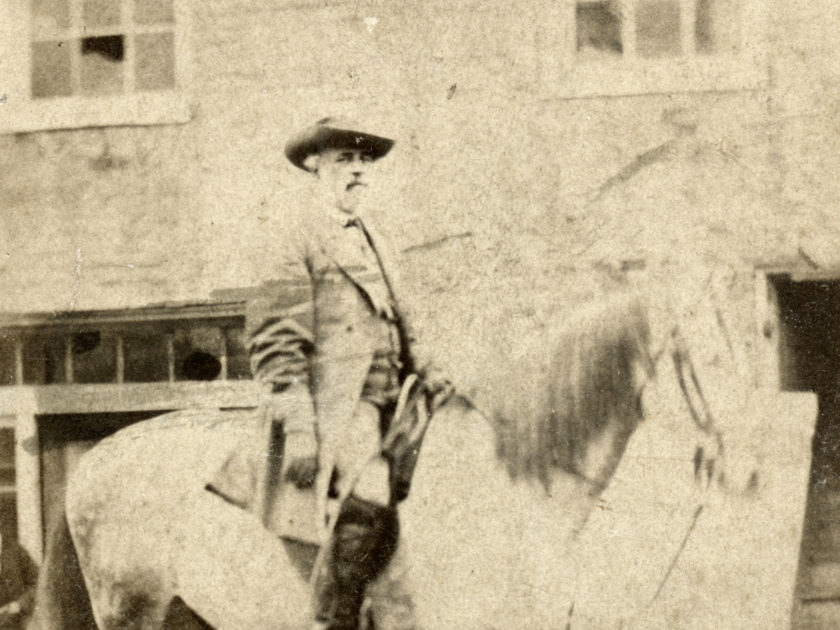By John O’Brien
Of all the photographs of Robert E. Lee, one stands out as favored above the rest: the gray-coated general seated on his faithful mount, Traveller.
According to tradition, the image was made in Petersburg, Va., during the last month or months of the war in 1865. Since that time however, little scrutiny has been given to several features in the image that actually date it to the post-war period.
“It is fitting and proper that this celebrated equestrian image be credited to those who made it.”
Lee wears his Confederate uniform, though stripped of all military insignia—no stars on the collar, no brass buttons or sleeve decoration. The absence of military insignia is consistent with a Union law issued after the end of the war that forbade the wearing of the Confederate uniform. The image also documents that Lee did, in fact, adhere to the regulation.
Further examination of a half-dozen cartes de visite of Lee on Traveller, including the print reproduced here, reveal an orange, two-cent U.S. revenue stamp on the verso of each mount. This stamp was payment for a tax on photographs levied on Aug. 1, 1864, to help pay for the war. The photograph tax was mandatory throughout the country, including the South, and remained in effect until its repeal on Aug. 1, 1866. Several of the Lee cartes de visite are hand-cancelled with the monogram “W. & K.,” while others include the surnames “White & Kelly.”

These photographers had been active in Lexington, Va., as early as the 1850s. Isaac N. White (1827–1905) was at one time associated with photographer Sam Pettigrew. His ads appear in the Lexington Gazette as late as 1864-1865. Joseph Kelly (1834-1914) first operated a studio on Washington Street in Lexington, without a partner. Kelly was also a Confederate veteran who served in the Rockbridge 1st Dragoons, also known as Company C of the 1st Virginia Cavalry. The regiment served in Gen. Lee’s Army of Northern Virginia, and participated in numerous engagements, including the Battle of Kelly’s Ford, Va., where Kelly suffered a wound on March 17, 1863.
The cause for the original mistaken attribution of the Lee and Traveller image to Petersburg is not known. But the error may have originated with the Dimenti Studios of Richmond, a 20th century photo firm, which cited the photo as being taken in Petersburg in 1864.
According to Lee biographer Douglas Southall Freeman, the former general wore the ex-military uniform when he came to Lexington to accept the presidency of Washington College on Sept. 18, 1865. Author Rose MacDonald also confirmed Lee’s attire in her 1939 book, Mrs. Robert E. Lee, in which she quoted an eyewitness who observed Lee firsthand. “He wore his military coat divested of all mark of rank; even the military buttons had been removed. He doubtless would have laid it aside altogether, but it was the only one he had and he was too poor to buy another.”

Another photographic portrait by White & Kelly presents Lee, full-faced and poignant, dressed in the same attire. The photograph was likely made about the same time as the image of Lee and Traveller.
Today, 150 years later, it is fitting and proper that this celebrated equestrian image be credited to those who made it—Lexington photographers Isaac N. White and Joseph Kelly.
But the curious may also wonder, did they take this photo on the very day Lee rode unaccompanied into Lexington?
One might wish it were so.
John O’Brien of Charles Town, W. Va., is a retired historian and journalist, from University of Connecticut, and a contributor to MI.
SPREAD THE WORD: We encourage you to share this story on social media and elsewhere to educate and raise awareness. If you wish to use any image on this page for another purpose, please request permission.
LEARN MORE about Military Images, America’s only magazine dedicated to showcasing, interpreting and preserving Civil War portrait photography.
VISIT OUR STORE to subscribe, renew a subscription, and more.

